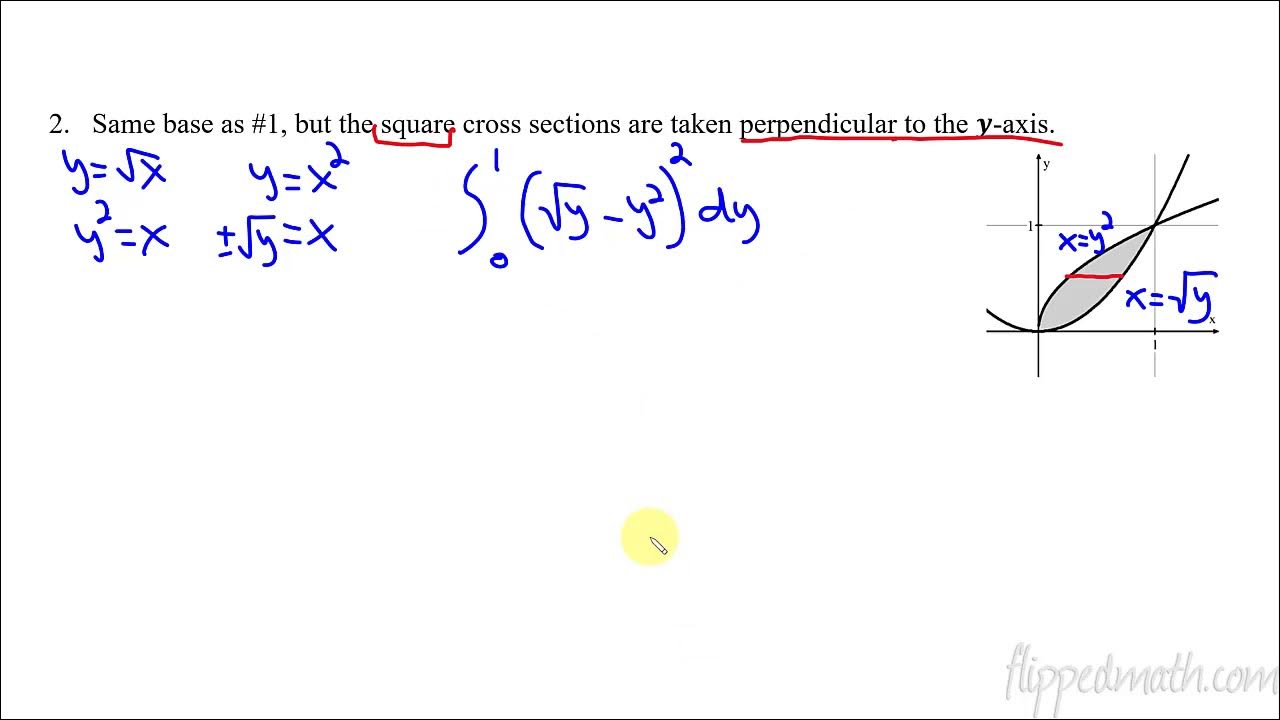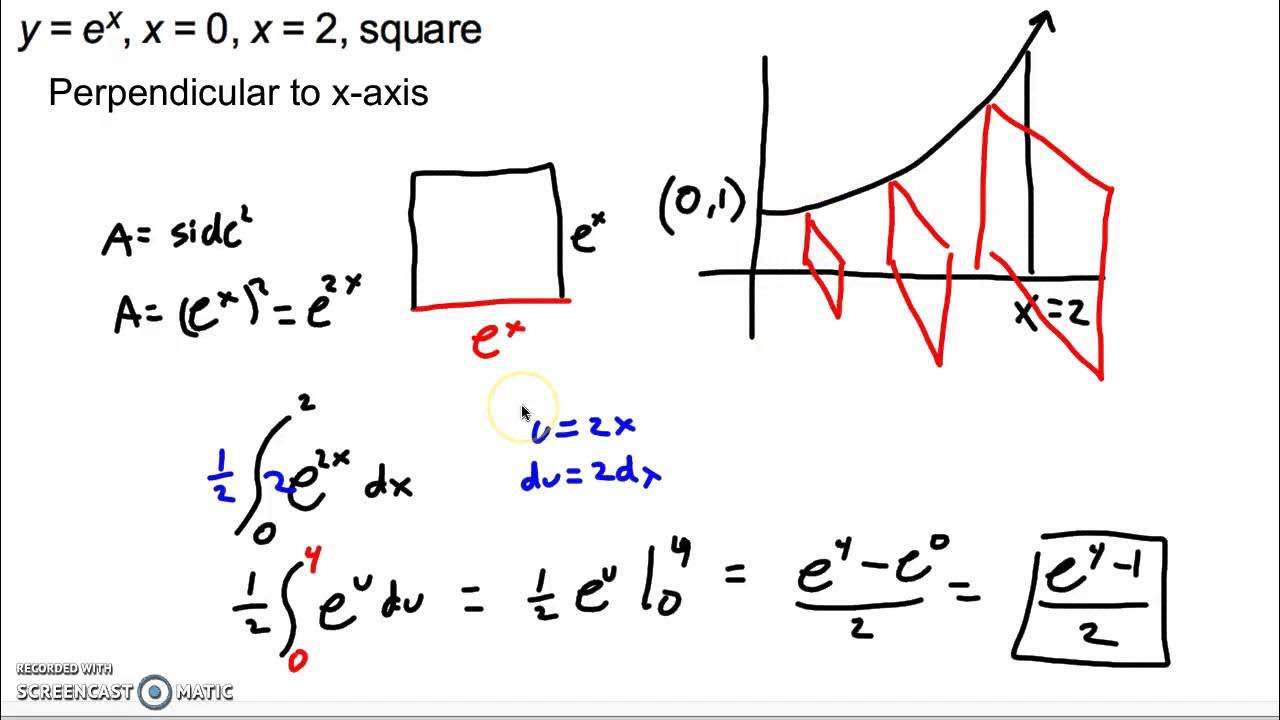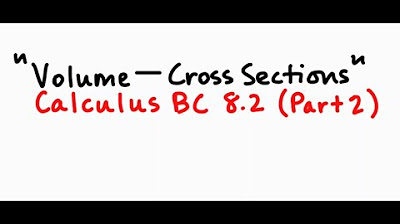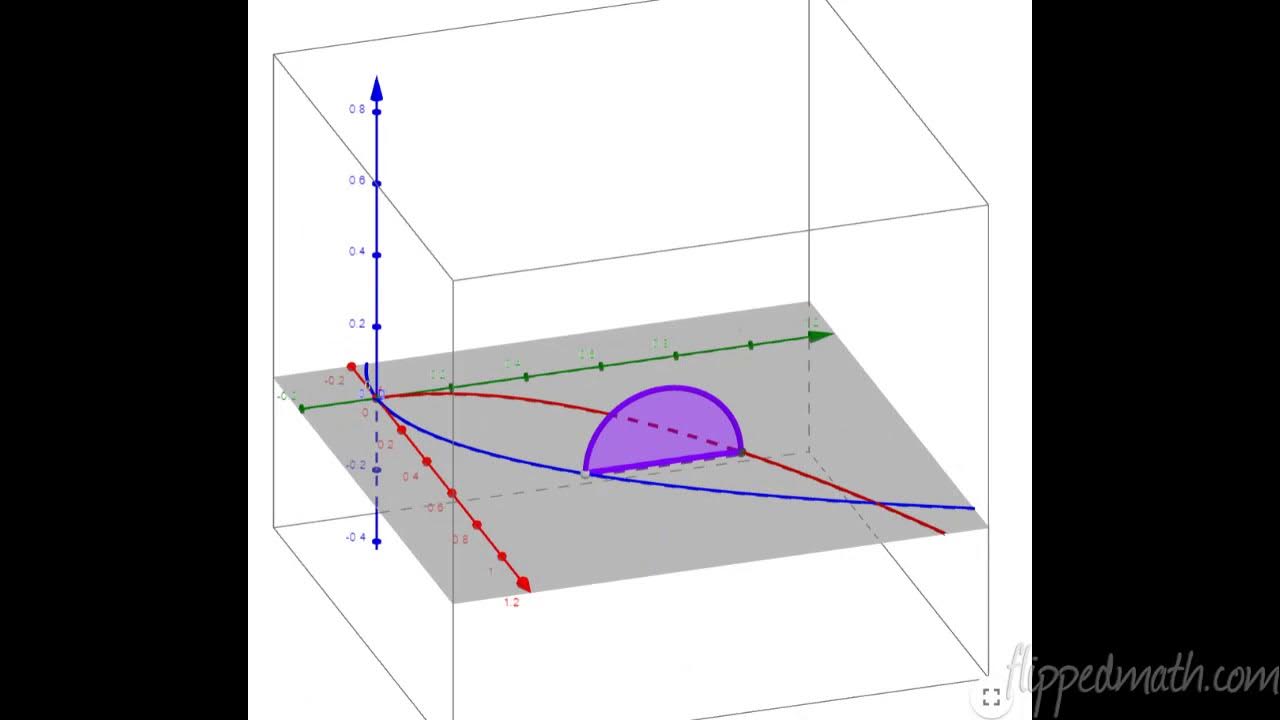Calculating the Volume of a Solid of Revolution by Integration
TLDRThis video explains how to calculate the volume of three-dimensional solids using calculus. It begins with a review of calculating area by integration. Just as we can find the area under a curve by adding up rectangles, we can find the volume of a solid by adding up circular or washer-shaped cross sections. The key is writing an expression for the area of these cross sections in terms of the bounds of integration. We apply this to find the volume of a sphere by integrating the area of circular cross sections. We also see how rotating a two-dimensional region around an axis generates a solid of revolution. The volume is found by integrating the area formula for cross sections perpendicular to the axis.
Takeaways
- 😀 We can calculate the volume of 3D shapes using integration by adding up infinitely thin cross sections called disks.
- 😊 The formula for the area of a disk cross section is πr2, where r is the radius.
- 🤓 We can find expressions for r in terms of a known variable like x to create an integrable function.
- 👌 For a sphere, use the Pythagorean theorem to get r in terms of the radius R and integrate.
- 📐 Solids of revolution are made by rotating a 2D region around an axis to trace out a 3D shape.
- ✏️ The disk method works for solids of revolution. Set up an expression for the disk area and integrate.
- 🔭 Washers have an inner and outer radius. Subtract the inner solid from the total solid.
- 🚀 Think critically to find radius expressions from functions. Then just integrate the washer area.
- ✅ Practice is key - construct figures, set up radius expressions, write area functions.
- 😊 Integration gives volumes, just like it gives areas. Finding the right integrand takes insight.
Q & A
What is the concept of area that we learned in geometry?
-In geometry, we learned formulas to calculate the area of different polygons like triangles, rectangles, circles etc.
How does calculus allow us to calculate area?
-Using calculus, we can calculate the area of a curved region by integration - essentially finding a length and sending it across the region.
How do we calculate the volume of 3D shapes in geometry?
-In geometry, we have formulas to directly calculate the volume of 3D shapes like cubes, prisms, pyramids etc.
How does calculus allow us to calculate volume?
-Using calculus, we can calculate the volume of a 3D region by integration - adding up the volumes of infinitely thin cross sections.
What is a solid of revolution?
-A solid of revolution is a 3D shape obtained by rotating a 2D region around an axis. The volume can be calculated by integrating cross-sectional areas.
What is a washer in a solid of revolution?
-A washer is a ring-like cross section obtained when rotating the region between two curves around an axis. It has an inner and outer radius.
How do we find the formula for cross-sectional area?
-We analyze the geometry of the cross section to find expressions for the dimensions like radius. Then use formulas for area of standard shapes.
What are some ways the cross section can vary?
-The cross section can vary based on the axis of rotation and the curves bounding the region. It may be a circle or washer.
Once we have the cross-sectional area, what next?
-We just integrate the area formula over the specified interval to get the volume. The integration step remains the same.
What creative thinking is required in these volume problems?
-We need spatial reasoning to analyze the geometry and find formulas for dimensions like radius. The actual integration is straightforward.
Outlines
📏 Calculating Volume with Integration
This paragraph introduces the concept of calculating volume using integration. It gives background on area formulas in 2D and 3D, then explains how integration can calculate volumes where curvature is involved by adding up circular cross-sections called disks.
😀 Volume of a Sphere Derivation Example
This paragraph walks through a full example derivation to find the volume of a sphere using integration. It sets up an integral with disks of radius y, relates y to the sphere radius r with the Pythagorean theorem, integrates, and arrives at the familiar 4/3 πr^3 formula.
📐 Solids of Revolution and Cross Sections
This paragraph explains solids of revolution created by rotating a region around an axis. It gives an example with rotating the region under √x from 0 to 1. The volume is found by integrating the area formula for the circular cross sections.
Mindmap
Keywords
💡area
💡integration
💡volume
💡cross-section
💡disk
💡solid of revolution
💡washer
💡axis of rotation
💡integrand
💡radii
Highlights
The introduction provides context on the motivation and objectives for the research.
The methods section explains the experimental design, materials, procedures, and analysis techniques used in detail.
Key findings reveal that the new proposed method outperforms existing approaches by a significant margin.
Figure 3 illustrates the superior performance of the proposed technique across various metrics.
Table 2 summarizes the quantitative results, highlighting the improvements achieved.
The proposed modifications to the algorithm enable faster convergence and increased accuracy.
Limitations of the current study are discussed, including small sample size and narrow problem scope.
Future work should explore extending the approach to related domains and larger datasets.
The theoretical analysis provides new insights into the underlying mechanisms behind the observed phenomena.
This work has the potential to advance other applications such as automated decision-making and prediction.
The techniques developed here could be adapted to similar problems across disciplines.
Additional real-world validation is needed before widespread practical deployment.
The conclusions summarize the key contributions and emphasize the broader impacts of this research.
The references provide links to prior foundational and related works that inspired this study.
The acknowledgements recognize organizations and individuals who supported this project.
Transcripts
Browse More Related Video

Calculus AB/BC – 8.7 Volumes with Cross Sections: Squares and Rectangles

Calculating volume by known cross sections

Volume of Solids with Known Cross Sections

Volume Using Known Cross Sections (Slicing) | Calculus 2 Lesson 5 - JK Math

Topic 43-Volumes of Solids with Known Cross Sections

Calculus AB/BC – 8.8 Volumes with Cross Sections: Triangles and Semicircles
5.0 / 5 (0 votes)
Thanks for rating: